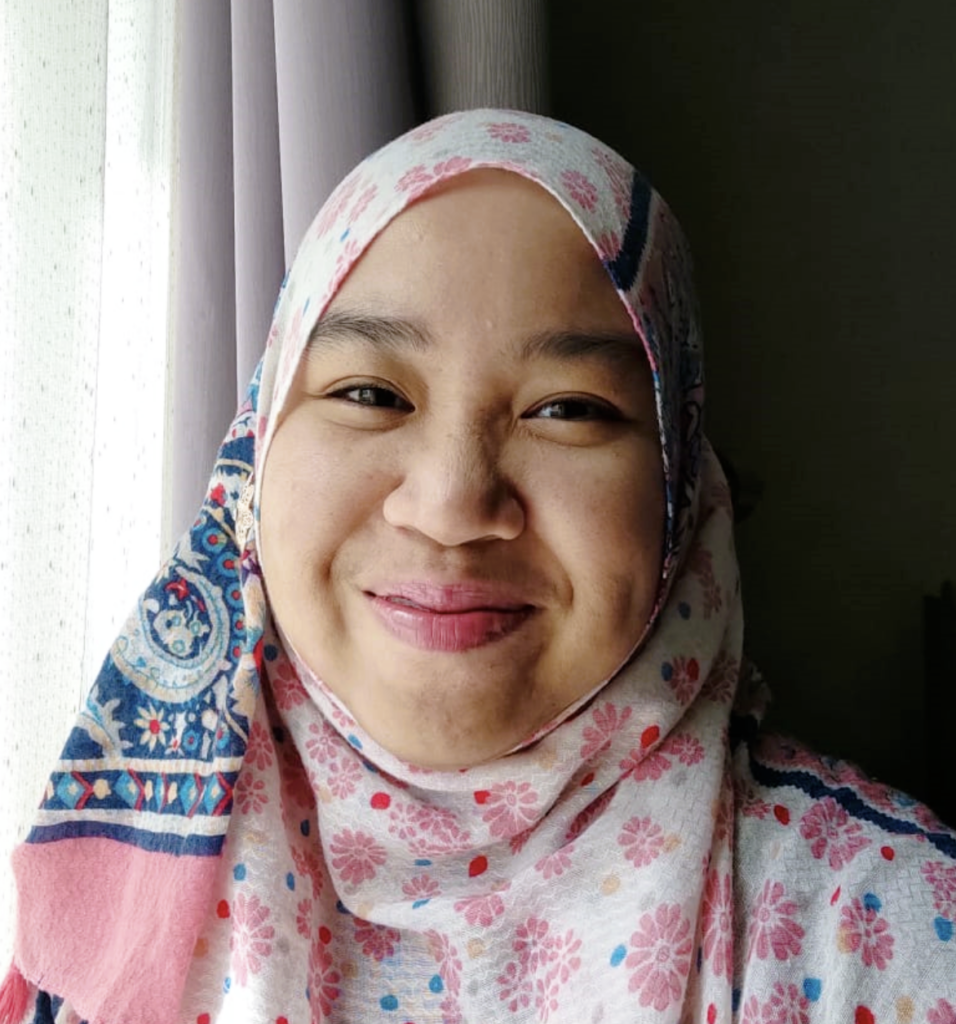IAUS 377: Early Disk-Galaxy Formation from JWST to the Milky Way was the first major astronomy conference in Southeast Asia since 1990, and was only possible due to the hard work of many local students in Malaysia! We sat down with four members of the Local Organizing Committee to learn about their path through astronomy and the impact of the conference.

Nurul Husna Bokhari is a student at KU Leuven studying AGB stars. Nurul models the chemical compositions of these stars, which are important because of their mass loss events and generation of dust.

Norsyazwani Asmi works at the National Planetarium in Kuala Lumpur, where she focuses on astronomy outreach and education in schools and universities. She also works on making astronomy accessible to people with low vision, and recently helped to make the first braille astronomy book in Malaysia.

Ahmad Najwan Zulkiplee is a student at Universiti Malaya who researches solar physics. He uses radio data to study solar flares and mass ejections.

Hidayah Ismail is a student at Universiti Malaya studying stellar evolution and neutrino luminosities. She models how neutrino emission changes as stars evolve, and makes predictions for neutrino detection experiments.
Q: What first interested you in astronomy?
NB: “My father really encouraged me when he saw that I really love space.” Nurul says her path is a little different because she did her undergraduate at Universiti Malaya in the Academy of Islamic Studies, and then transitioned to a physics program in Belgium. She says that the transition from Islamic Astronomy to a physics program was very difficult, but worth the effort!
NA: Norsyazwani grew up in a small rural village, with great views of the sky, which inspired her to pursue astronomy. Her undergraduate degree was mostly in pure physics, with a couple of courses in astrophysics and cosmology, and she got involved in dark matter research. She transitioned to astronomy outreach when her professor recommended her to the director of the National Planetarium.
AZ: Ahmad says his family did a lot of traveling late at night, and he would nap on the way. But one day he suddenly woke up and saw a shooting star! When he was starting his bachelor’s degree he wanted to do astronomy but couldn’t find any programs, so decided to do a pure physics degree instead. When he graduated he looked again for astronomy programs, but still no luck. Following advice from his dad, Ahmad took some time off, kept an eye out for new opportunities, and eventually stumbled upon his current supervisor, who helped him get into Universiti Malaya!
HI: When Hidayah was younger, she wanted to be a pilot. But eventually she realized that the reason she wanted to be a pilot was mostly because she loved the physics behind airplanes! She says that when she was entering college, her parents wanted her to be a doctor, but she was set on physics and told them that becoming a doctor of physics is a good compromise! In undergrad, she started research in solar spectroscopy, and enjoyed working with her advisor so much that she continued the work during her masters. After that she wanted to transition to astrophysics, but the timing coincided with the pandemic, so she took a couple of years off. Afterwards, her supervisor happened to have a new project in neutrino physics, so she took the opportunity and soon after was accepted to graduate school!
Q: What were the most exciting parts of organizing this IAUS conference, and what were the biggest challenges?
NB: “I want to be part of the history” Nurul says she joined because it was a good opportunity to meet people and learn about new JWST science. The biggest challenge was organizing the international conference while keeping up with research and school work as a full-time student, but she says having a good team made the work easier!
NA: It was a good opportunity to organize and to make new friends! Having worked for the planetarium, Norsyazwani is very familiar with event organizing, though the IAU conference was definitely the largest scale event she’s worked on.
AZ: Ahmad agreed that meeting other scientists was a highlight of being part of the LOC – “We really want to be part of a greater cosmic community” Before the IAU conference, Ahmad was already the lead organizer for the Monsoon School, a galaxies workshop for early career astronomers held before the conference. He says the biggest challenge in organizing these huge conferences was balancing working with so many high profile people in science and in the IAU.
HI: “I didn’t know what I was getting into, but I was excited for the opportunity” Organizing the conference taught hidayah a lot of new skills really quickly. While she says it was initially difficult to talk to so many new people, it got a lot easier as she handled travel and lodging logistics for all of the astronomers traveling to Malaysia. She also became the photographer for the event – holding up her camera, she says “I got this two weeks ago and now I’m a pro!”
They all agree that “all the challenges we had were washed away when we got positive feedback from the Monsoon school… all the hard work was worth it!”
Q: What would you like to see from Southeast Asian astronomy in the future? Any advice for students who are just starting out?
NB: “We want to unite people; there are ~100 Malaysian astronomers around the world and we want to connect them.” Nurul says the younger generation in Southeast Asia is really interested in space, but right now there aren’t that many career paths, so lots of people stop studying astronomy. She hopes that events like GMAC (Global Malaysia Astronomers Convention) and the IAUS conference will help bring more opportunities to the area and allow people to build careers in astronomy! As for advice, she says “stick to your passion, even if it’s hard.”
NA: “I hope that the Malaysia government sees the importance of astronomy in Malaysia.” Governments typically really focus on more product-centered science, instead of more theoretical pursuits, and Norsyazwani would really like to see the government take on the challenge of investing in astronomy. To undergrads, she says it’s important to build your skills, and to try to get as many skills as you can (both by studying different science topics and general skills like languages and coding).
AZ: “I’ve seen a lot of steps towards a brighter future for Malaysia, and Southeast Asian countries.” Ahmad says he’s seeing a lot of movement towards getting Southeast Asian countries to collaborate and build an astronomical community. He also agrees with building skills and interests in multiple areas, especially skills that help you to work in different environments and with different people. For example, his lab includes a lot of people overseas, so it’s important to figure out how to connect with everyone. To early career folks, he says “don’t be shy, just keep asking dumb questions and don’t worry about being seen as a person with no knowledge.”
HI: Hidayah echoed the hopes for more collaboration and visibility for Southeast Asian astronomy. For advice, she says “passion is built,” so if there’s something you like, go out and search for opportunities for yourself. As she put it, “You can’t wait for the omelet to be put on your table, sometimes you have to go to someone and say ‘I want an omelet.’”
Astrobite edited by: Pratik Gandhi
Featured Image Credit: IAUS 377




